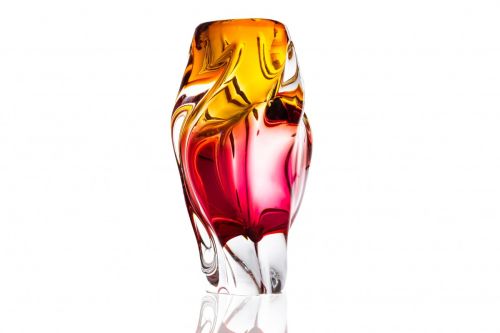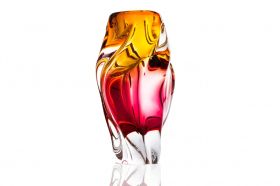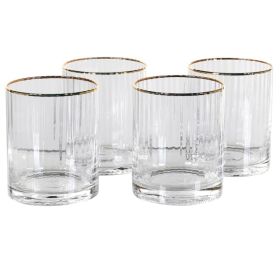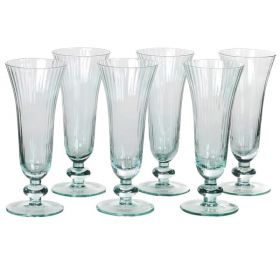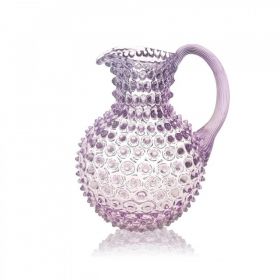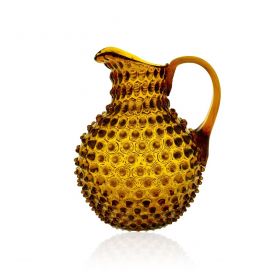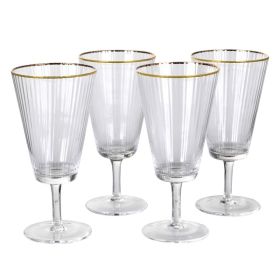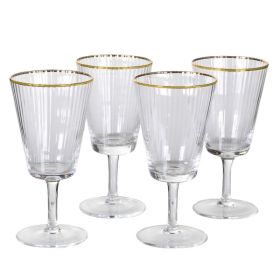Turning Torso Vase - Ruby + Amber
Price:
€77.72
-
Code:291-108
-
Weight:0.900 Kgs
Oslo Vase
Height 17 cm
Material glass
Color: Ruby + Amber
About our use of glass:
Glass is a fantastic material. It is at once fragile and at the same time incredibly strong. Of course, it has physical strength, and withstands, for example, moisture, sun, and frost. But it is just as strong in its artistic and aesthetic expression. The transparency and reflection of the glass create depth when it plays with the light in refractions and reflections. Blowing glass is a fascinating and time-consuming process. The artist handles the glass when it is still liquid to when it is up to 1300˚ Celsius. Naturally, there are also challenges with glass and we have gathered the most common questions here.
Air bubbles
We call them charm bubbles. They naturally occur in the work process when air is captured between the different layers of glass. Glass is blown by several layers and thus air bubbles are likely to form. Smaller air bubbles characterize handmade glass, and we do not consider it a deterioration in quality.
Tension in glass
Tensions can occur with temperature differences. To avoid these tensions, we cool the finished and still hot glasses very slowly. If the damage has occurred during the process, the glass is extremely fragile and can suddenly crack or burst at the slightest impact, and we naturally exchange it with a smile.
Care of glass
Our crystal glasses are machine-washable when subject to the following recommendations: - Use a short washing program, less than 60˚ celcius, without a drying program. - Open the door of the washing machine so that water can evaporate and dry your glasses with a tea towel. - Our glasses are resistant to mild acids but not stronger acids like ”minus lime”, as well as various descaling agents that you usually buy in the household. Instead, we advise you use citric or acetic acid.
Natural colors
Our crystal glass is stained. A combination of traditional technology and earth minerals sums up our wide range of colors. Our bluish shades are achieved by adding the liquid glass mass of Cobalt oxide. The green and brownish colors are associated with iron. Pink and Ruby with gold chloride. We love stained glass and are proud to work with talented glaziers who teach us to develop our very own colors from nature's treasure trove.
Quality
Our crystal glasses do not contain lead. We only produce environmental crystals. Lead-containing crystal glass is unsuitable for food and drink. In some of our designs where we place extra demands on strength, lightness, and gloss, the element Barium is used. Especially for our mouth-blown wine collection “Lyon” and “Limoux”.
Glass is a fantastic material. It is at once fragile and at the same time incredibly strong. Of course, it has physical strength, and withstands, for example, moisture, sun, and frost. But it is just as strong in its artistic and aesthetic expression. The transparency and reflection of the glass create depth when it plays with the light in refractions and reflections. Blowing glass is a fascinating and time-consuming process. The artist handles the glass when it is still liquid to when it is up to 1300˚ Celsius. Naturally, there are also challenges with glass and we have gathered the most common questions here.
Air bubbles
We call them charm bubbles. They naturally occur in the work process when air is captured between the different layers of glass. Glass is blown by several layers and thus air bubbles are likely to form. Smaller air bubbles characterize handmade glass, and we do not consider it a deterioration in quality.
Tension in glass
Tensions can occur with temperature differences. To avoid these tensions, we cool the finished and still hot glasses very slowly. If the damage has occurred during the process, the glass is extremely fragile and can suddenly crack or burst at the slightest impact, and we naturally exchange it with a smile.
Care of glass
Our crystal glasses are machine-washable when subject to the following recommendations: - Use a short washing program, less than 60˚ celcius, without a drying program. - Open the door of the washing machine so that water can evaporate and dry your glasses with a tea towel. - Our glasses are resistant to mild acids but not stronger acids like ”minus lime”, as well as various descaling agents that you usually buy in the household. Instead, we advise you use citric or acetic acid.
Natural colors
Our crystal glass is stained. A combination of traditional technology and earth minerals sums up our wide range of colors. Our bluish shades are achieved by adding the liquid glass mass of Cobalt oxide. The green and brownish colors are associated with iron. Pink and Ruby with gold chloride. We love stained glass and are proud to work with talented glaziers who teach us to develop our very own colors from nature's treasure trove.
Quality
Our crystal glasses do not contain lead. We only produce environmental crystals. Lead-containing crystal glass is unsuitable for food and drink. In some of our designs where we place extra demands on strength, lightness, and gloss, the element Barium is used. Especially for our mouth-blown wine collection “Lyon” and “Limoux”.

